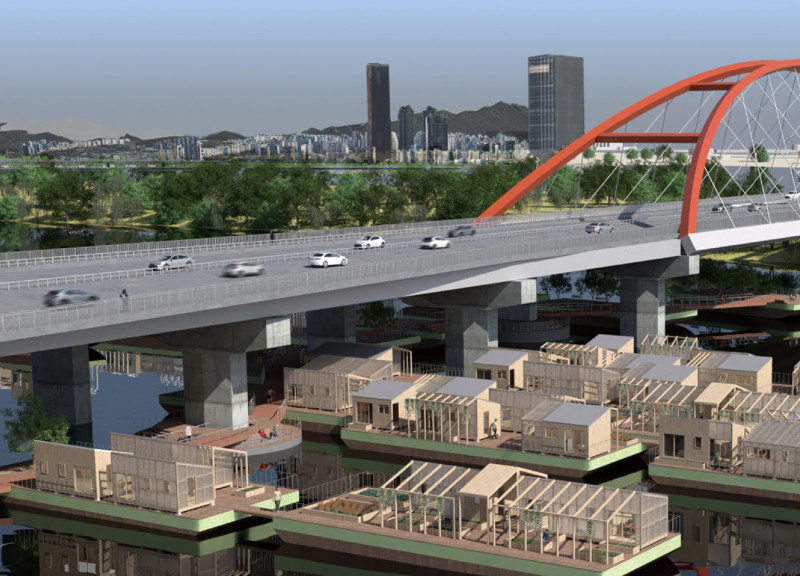5 key facts about this project
The design emphasizes a commitment to sustainability, employing a variety of materials that highlight both durability and aesthetics. Key materials include reinforced concrete, glass, steel, and timber, each selected for their specific qualities and contributions to the overall design. Reinforced concrete forms the backbone of the structure, providing stability and strength while allowing for expansive open spaces inside. Glass is strategically used to create an interface between the interior and exterior landscapes, fostering a connection with nature while allowing ample natural light to filter into the spaces. Steel frames offer structural support with the added benefit of a modern, sleek appearance, while timber infusions provide warmth and texture, creating inviting environments for human interaction.
The project's layout is meticulously planned, focusing on the flow and functionality of each area. Each space is designed to cater to specific activities, promoting efficiency while encouraging social interaction. Common areas are abundant, facilitating gatherings and fostering a sense of community among users. Private spaces are carefully positioned to ensure privacy without sacrificing accessibility, allowing for an adaptable environment that can respond to various uses throughout the day.
One of the unique design approaches present in this project is the integration of biophilic design principles, which connect occupants with nature. Outdoor terraces and gardens have been incorporated into the architectural scheme, not only enhancing the aesthetic appeal but also providing health benefits associated with exposure to greenery. The use of living walls and strategically placed courtyards breaks up the building mass and creates visual interest while contributing to the site’s biodiversity.
Furthermore, the project reflects a profound understanding of local context, taking cues from the surrounding landscape and architectural styles. Selecting colors, forms, and materials that mirror those found in the environment allows the structure to sit harmoniously within its setting rather than imposing upon it. This contextual sensitivity enriches the user experience and reinforces a sense of place and belonging.
The integration of innovative technologies with traditional methods illustrates the project's forward-thinking approach. Smart building systems have been incorporated for energy efficiency and user control over environmental conditions. These systems facilitate a responsive environment that adjusts in real time to the needs of its occupants, marrying comfort with sustainability.
In essence, this architectural project exemplifies a harmonious blend of functionality, sustainability, and contextual relevance. It serves not only as a space for various activities but also as a landmark that engages its users and promotes community interaction. The careful selection of materials, thoughtful layout, and unique design approaches underpin a sense of permanence and adaptability, ensuring the project will remain relevant for years to come. For those interested in delving deeper into the architectural plans, sections, designs, and ideas that shaped this project, further exploration of its presentation will provide a comprehensive understanding of its intricate details and innovative solutions.























